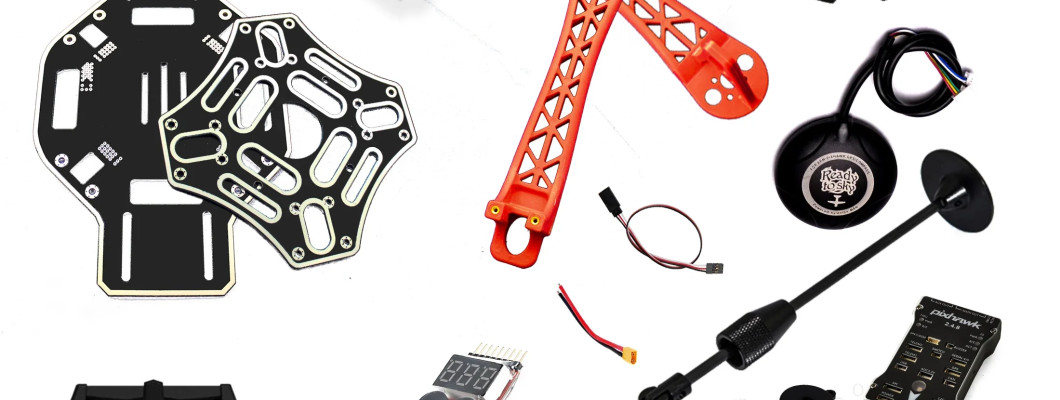Various Components Used for Quadcopter: A Comprehensive Guide

Quadcopters, or drones, have revolutionized the way we capture aerial footage and undertake various tasks, such as search and rescue operations, surveying, and more. These flying machines come in various shapes and sizes, and their functionality depends on the type and quality of the components used in their construction. In this article, we'll delve into the different components used in quadcopters and their roles in the drone's performance.
1. Frame
The frame is the backbone of a quadcopter. It holds all the components in place and provides stability to the device. The frame can be made of various materials, including carbon fiber, aluminum, and plastic. The size and shape of the frame depend on the intended use of the quadcopter. For example, a racing quadcopter would have a smaller and more streamlined frame than a camera quadcopter.
2. Motors
The motors are responsible for generating the power needed to lift the quadcopter and move it in the air. There are four motors in a quadcopter, one for each rotor. The motors can be brushed or brushless, with brushless motors being more powerful and efficient. The size and power of the motors depend on the size and weight of the quadcopter.
3. Propellers
Propellers are attached to the motors and create the lift and thrust needed for the quadcopter to fly. There are two types of propellers: clockwise (CW) and counterclockwise (CCW). The propellers must be installed correctly, with the CW propellers on one side of the quadcopter and the CCW propellers on the other side. The size and pitch of the propellers depend on the size and weight of the quadcopter.
4. Electronic Speed Controllers (ESCs)
The ESCs are responsible for controlling the speed and direction of the motors. They receive signals from the flight controller and adjust the speed of each motor accordingly. The ESCs can be built into the flight controller or separate components.
5. Flight Controller
The flight controller is the brain of the quadcopter. It receives input from the radio transmitter and sends signals to the ESCs to control the motors. The flight controller can also include other features, such as GPS, barometer, and gyroscopes, to improve stability and performance.
6. Battery
The battery provides the power needed to run the motors, ESCs, and flight controller. The battery capacity and voltage depend on the size and weight of the quadcopter and the desired flight time.
7. Radio Transmitter and Receiver
The radio transmitter and receiver allow the pilot to control the quadcopter's movement. The transmitter sends signals to the quadcopter, and the receiver on the quadcopter receives and processes the signals to control the motors.
8. Camera and Gimbal
A camera and gimbal can be attached to a quadcopter for aerial photography and videography. The gimbal stabilizes the camera and allows for smooth footage. The camera can be either a GoPro or a specialized camera designed for aerial photography.
9. Landing Gear
The landing gear provides a safe and stable landing for the quadcopter. It can be fixed or retractable and is typically made of plastic or carbon fiber.
10. GPS Module
A GPS module can be added to a quadcopter to improve navigation and flight stability. The GPS module can provide location data, altitude, and speed information.
11. On-screen Display (OSD)
An OSD can be installed on a quadcopter to display important information, such as battery voltage, flight time, and altitude. The OSD can be integrated into the camera or displayed on a separate screen.
12. Voltage Regulator
A voltage regulator ensures that the components of a quadcopter receive the correct voltage. It regulates the voltage from the battery to prevent damage to the components.
13. LED Lights
LED lights can be installed on a quadcopter for improved visibility and aesthetics. The lights can be programmed to flash or change colors to indicate the status of the quadcopter.
Conclusion
Quadcopters have revolutionized the way we see the world from above. Knowing the different components that make up a quadcopter is essential for building, maintaining, and repairing one. From the frame to the motors, ESCs, and flight controller, each component plays a crucial role in the quadcopter's performance. By understanding how these components work together, you can improve the stability, maneuverability, and functionality of your quadcopter.
Leave a Comment